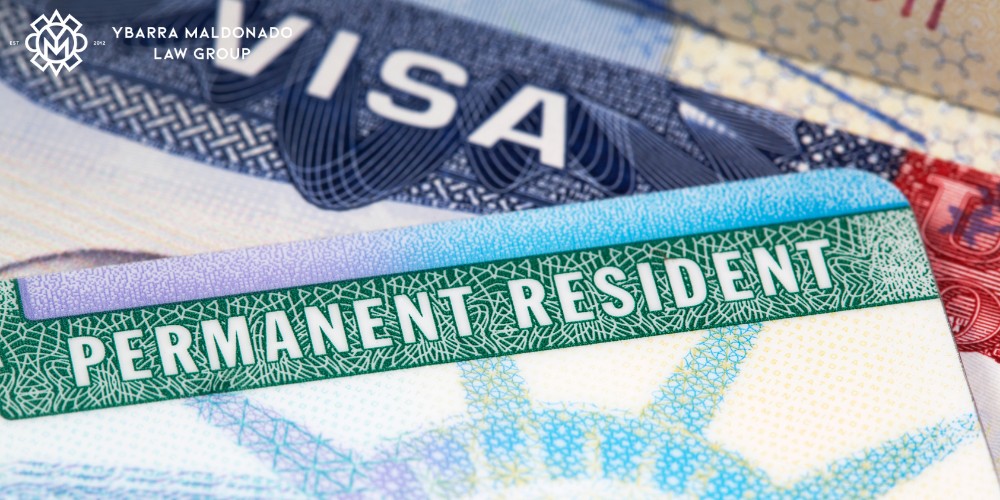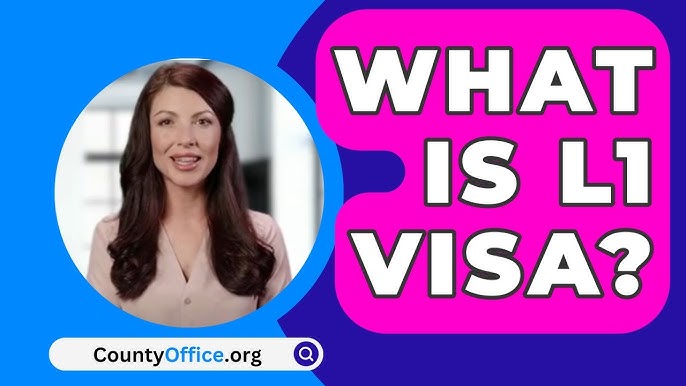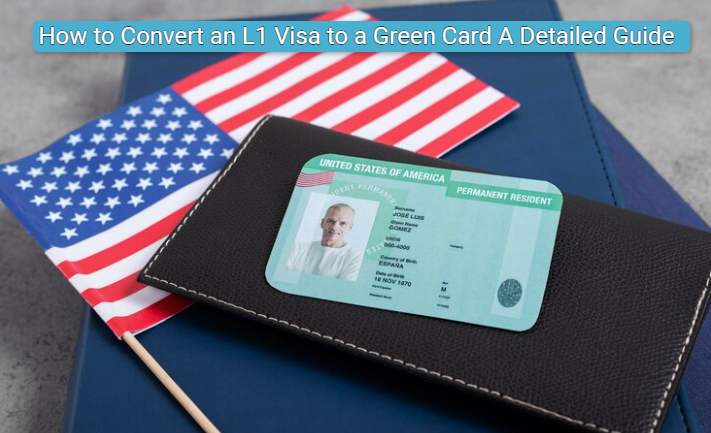Start L1 Visa Today
Unlocking Opportunities: A Comprehensive Overview to the L1 Visa Process
The L1 visa procedure offers a crucial pathway for international companies seeking to transfer vital employees throughout borders. Understanding the subtleties of qualification criteria, the distinctions in between L-1A and L-1B visas, and the intricacies of the application procedure can substantially impact a candidate's success. However, steering this complex landscape is not without its challenges, and careful focus to documents and employer sponsorship is essential. As we check out the essential parts of this process, the strategies for overcoming possible challenges will end up being noticeable, exposing just how informed preparation can open a world of possibilities.
Recognizing the L1 Visa
Understanding the L1 visa entails acknowledging its value as a crucial tool for international companies seeking to move skilled employees between global offices. This non-immigrant visa classification assists in the movement of executives, supervisors, and specialized knowledge employees to the USA, thereby enabling organizations to keep operational continuity and harness global talent effectively. The L1 visa is separated into two main classifications: L-1A for supervisors and executives, and L-1B for staff members possessing specialized knowledge.The L1 visa offers a vital role in improving a firm's one-upmanship in the international industry - L1 Visa. By allowing firms to move their key personnel, organizations can ensure that important tasks are taken care of by qualified people who are currently acquainted with the firm's culture and operational processes. This interior transfer mechanism not only promotes knowledge sharing yet additionally advertises development and collaboration across borders.Moreover, the L1 visa is frequently favored for its fairly uncomplicated application procedure contrasted to various other visa groups, as it permits dual intent, allowing holders to go after permanent residency while on a short-lived copyright. This attribute makes the L1 visa particularly appealing for both companies and workers, as it streamlines the pathway for knowledgeable professionals to establish long-term residency in the United States
Eligibility Criteria
Eligibility for the L1 visa rests on numerous crucial requirements that ensure both the staff member and the employer meet details credentials. This non-immigrant visa is developed for international firms to move employees from foreign workplaces to united state counterparts.Firstly, the employer needs to be a qualifying organization, which includes a parent business, branch, associate, or subsidiary of a united state organization. The company needs to have been doing business for at least one year both in the united state and abroad. This guarantees that the business has sufficient operational stability and a legit presence.Secondly, the employee should hold a managerial, executive, or specialized understanding placement. For L1A visas, the candidate has to demonstrate supervisory or executive credentials, while L1B visas concentrate on specialized knowledge pertaining to the organization's items, solutions, or processes. Additionally, the staff member needs to have functioned for the foreign entity for at the very least one continual year within the last three years before their application.Lastly, the employee's function in the U.S. must line up with their previous placement, making certain that their skills and experience are leveraged for the company's benefit.
Kinds of L1 Visas
The L1 visa category consists of 2 main types developed to facilitate the transfer of employees within multinational companies: the L1A visa for supervisors and executives, and the L1B visa for workers with specialized expertise. Each kind serves distinctive purposes and has particular qualification criteria.The L1A visa is customized for individuals who hold managerial or executive placements within a business. This visa enables high-level workers to move to a united state branch, subsidiary, or associate of the same organization. Applicants for the L1A visa have to demonstrate that they have been employed in a supervisory or executive capacity for at least one continual year within the past three years before their application. Additionally, this visa offers a longer period of keep, at first approved for three years, with the opportunity of expansions for approximately 7 years.In contrast, the L1B visa is meant for professionals with specialized understanding related to the firm's items, solutions, or processes. To qualify, applicants should show that their knowledge is critical to the company and that they have actually functioned for at the very least one continuous year within the last 3 years in a duty that required this specialized understanding. The L1B visa is originally provided for 3 years, with extensions offered for as much as 5 years.Both visa kinds are crucial for companies looking for to boost their global operations by leveraging competent workers, thereby advertising innovation and performance within the U.S. market.
Application Process
Guiding through the L1 visa procedure includes numerous important steps that must be carefully followed to guarantee an effective outcome. The procedure begins with the U.S. employer, who should first develop qualification by showing a qualifying relationship with the foreign entity and verifying that the worker fulfills the specific needs for the L1 visa classification being sought.Once qualification is confirmed, the company starts the process by submitting Kind I-129, the Petition for a Nonimmigrant Employee, with the United State Citizenship and Migration Services (USCIS) This kind has to be gone along with by an in-depth description of the work obligations to be executed, the organizational framework of both the united state and foreign entities, and the worker's credentials. It's crucial to verify that all info is precise and full, as noninclusions or mistakes can lead to delays or denials.Upon authorization of the I-129 request, the next action entails the staff member getting the L1 visa at an U.S. embassy or consulate in their home country. This phase needs the conclusion of Kind DS-160, the Online Nonimmigrant Visa, and scheduling an interview. During the meeting, the candidate must provide evidence sustaining their certifications and the company's petition.After the visa is given, the staff member can get in the USA to operate in the designated role. Generally, cautious prep work and adherence to every action of the application procedure are essential for an effective L1 visa end result.
Required Paperwork

Crucial Forms Required
Steering the L1 Visa process requires mindful focus to the essential forms and documents essential for an effective application. The primary type required is the Kind I-129, Application for a Nonimmigrant Worker, which need to be finished and submitted by the united state employer. This form describes the details of the employment offer and the certifications of the worker looking for the L1 Visa.Alongside Kind I-129, the candidate will certainly need to check here full Form I-539 if coming with member of the family are likewise getting visas. Additionally, the employer has to give evidence of the qualifying relationship between the united state entity and the foreign entity, commonly necessitating the submission of corporate documents such as short articles of consolidation or economic statements.Moreover, it is necessary to include the L Classification Supplement to Kind I-129, which specifies the type of L Visa being asked for-- either L-1A for supervisors and executives or L-1B for employees with specialized understanding. Finally, candidates should assure that all forms are signed and dated suitably, as insufficient entries can bring about hold-ups or rejections. Correctly constructing these crucial types lays the structure for a smoother L1 Visa procedure.

Sustaining Evidence Needs
Supporting paperwork is vital for a successful L1 Visa, as it corroborates the claims made in the application. Candidates have to supply a series of records to demonstrate qualification for the visa, which is categorized into two primary types: evidence of the certifying connection between the U.S. and international entities and proof of the candidate's qualifications.To establish the partnership, candidates should send documentation such as corporate organizational charts, monetary statements, and proof of ownership. These files validate that the foreign company has a certifying relationship with the U.S. company, whether as a moms and dad company, subsidiary, branch, or affiliate.For the applicant's certifications, crucial records include a detailed work letter from the foreign employer, detailing the candidate's task title, obligations, and duration of work. Furthermore, instructional qualifications, such as degrees and diplomas, should be offered to confirm the candidate's know-how in the relevant field.
Employer Sponsorship Records

Usual Challenges
Maneuvering the L1 visa procedure provides a number of usual difficulties that candidates must know. Key problems typically consist of rigorous documents requirements, potential hold-ups in handling times, and the need for rigorous lawful compliance. Comprehending these obstacles can help applicants much better prepare and reduce dangers throughout their visa trip.
Documents Demands
The L1 visa process frequently presents substantial obstacles connected to paperwork needs. Candidates have to offer comprehensive documentation to establish eligibility, which can bring about complication and possible hold-ups. Secret papers include proof of a certifying relationship between the U.S. and foreign employer, evidence of the applicant's work background, and thorough details regarding the job role in the U.S.One common obstacle is collecting sufficient proof to show the nature of the qualifying relationship. Firms commonly battle to existing clear organizational graphes or economic statements that illustrate the link between the entities. Furthermore, ensuring that letters of assistance from employers precisely mirror the applicant's task obligations and qualifications is important, as obscure descriptions can result in denials.Another problem emerges from the requirement for detailed job descriptions that align with the L1 visa groups. Applicants need to express not only their current function yet also their supervisory or customized understanding obligations clearly. This necessitates a comprehensive understanding of both the applicant's setting and the regulative language used in L1 visa.
Handling Dead Time
Experiencing hold-ups in processing times is a common obstacle dealt with by L1 visa candidates, typically leading to irritation and uncertainty. A number of elements add to these hold-ups, including high application volumes, raised scrutiny of applications, and administrative backlogs within the U.S. Citizenship and Migration Solutions (USCIS) Candidates might locate that processing times can vary greatly depending upon the solution facility handling their application, as each center has its very own workload and efficiency levels. Furthermore, the intricacy of the candidate's instance, such as the requirement for extensive documentation or information, can even more extend wait times.In some instances, concerns related to the candidate's current immigration status or previous visa background may also lead to additional hold-ups, as USCIS might require more evaluation or details. It is crucial for candidates to remain positive throughout this duration, maintaining open interaction with their employers and lawful representatives to resolve any type of possible concerns promptly.Understanding these processing time obstacles can assist L1 visa applicants get ready for possible hold-ups and minimize the effect on their change and job strategies. Persistence and persistance are essential merits in steering this complex procedure.
Lawful Compliance Issues
Numerous L1 visa applicants experience legal compliance issues that can complicate their trip towards obtaining the visa. Recognizing and sticking to the certain guidelines set by the united state Citizenship and Immigration Solutions (USCIS) is vital. Typical challenges include demonstrating the certifying partnership in between the foreign and united state employers, as well as proving that the candidate possesses the requisite customized expertise or managerial capacity.Additionally, applicants should provide comprehensive documents outlining their job obligations, corporate structure, and financial feasibility of the united state entity. Poor or incorrect paperwork can cause delays and even denials. Employers should additionally guarantee that they adhere to labor regulations, consisting of wage and working problem criteria, which can impact visa eligibility.Another common problem involves maintaining compliance with the terms of the visa when given. Modifications in employment condition, job obligations, or firm structure can demand amendments to the visa, which if not dealt with promptly can result in lawful complications. Consequently, remaining educated about compliance requirements and seeking legal guidance when required is necessary to navigate the intricacies of the L1 visa procedure effectively.
Tips for Success
Success in the L1 visa procedure commonly depends upon precise preparation and interest to information. To improve your possibilities of authorization, begin by extensively recognizing the eligibility needs for both the L1A and L1B visa groups. Review whether your setting at the business qualifies as supervisory, exec, or specialized expertise, as this categorization especially impacts your application.Next, collect extensive paperwork that validates your cases. This includes business charts, comprehensive job descriptions, and evidence of the firm's functional structure. Clear and succinct evidence of the certifying partnership in between the U.S. entity and the foreign entity is essential. Verify that all papers are arranged realistically and offered in a professional fashion, as this reflects your dedication and severity about the application.Engage the solutions of a knowledgeable immigration attorney who specializes in L1 visas. Their experience can confirm invaluable, guiding you with complex policies and guaranteeing that all documents abides by present regulations. Furthermore, prepare for the interview by exercising solution to common concerns and being all set to review your role and contributions to the firm in deepness.
Often Asked Questions
Can Household Members Accompany the L1 Visa Owner?
Yes, household members of L1 visa holders, consisting of spouses and unmarried youngsters under 21, can accompany the main visa holder. They may also request L2 visas, which enable them to stay in the United States.
How Lengthy Can I Remain On an L1 Visa?
The L1 visa permits preliminary stays of approximately 3 years, with the opportunity of expansion. L1A visa holders may stay for a maximum of 7 years, while L1B visa holders can remain for five years.
Can L1 Visa Owners Look For a Permit?
Yes, L1 visa holders can make an application for an environment-friendly card. L1 Visa. They may seek permanent residency via employment-based groups, commonly needing sponsorship from their employer, supplied they satisfy the required qualifications and documentation needs
What Occurs if My L1 Visa Is Refuted?
If your L1 visa is denied, you may obtain a notice detailing the factors for denial. You can look for to appeal the choice, reapply, or check out different visa options based upon your scenarios.
Are There Any Type Of Traveling Limitations With an L1 Visa?
An L1 visa usually permits international traveling; however, re-entry to the U. L1 Visa Requirements.S. rests upon preserving valid condition. Vacationers ought to assure compliance with visa conditions to avoid problems upon return
Verdict
